So last
week we played a big Sudan Colonial game using the Men Who Would Be Kings
ruleset – If you haven’t read that one can I suggest that you head there first
and read that one before this post. Don’t worry there will be a link at the end
of that post to bring you back here.
Last week’s
game was a massive win for the locals – the sight of Dervishes pouring over the
dunes and butchering the plucky Brits was somewhat out of keeping with the
period but made for a fantastic game. So how did the same game play with a
completely different set of rules?
This time
we were going to use our trusty favourite Black Powder and I think it is fair
to say they delivered an equally fascinating and exciting game.
The orders
of battle, the set up and the terrain were exactly as before. The only
difference being the assignment of commanders – each player received two
Commanders with the British being given better ratings. Even the players who
fought out last Mondays encounter fought in exactly the same position using the
same troops.
Unfortunately there is no battle report but rather a delve into some of the
variations of the games. I have chucked in a few photos
In the
first game we saw the British slaughtered by a more numerous native horde and
perhaps this justifies the points system in play for TMWWBK ruleset. Had the
forces been evenly matched on points the result might have been different. The
second game saw the result reversed and arguably a better result for historical
accuracy. Again the battle was fought in about 2 hours – a rapid game of highs
and low points for both sides and certainly some very tense moments. Last week
it was evident that the British were going to seriously struggle but this week
my forces held their own and delivered their own killer blows to the Mahdist forces.
Perhaps most importantly in the first game it was quite evident that the
British were going to come off second best quite early on, the second game was
a much more tense affair and had die rolls been different the Mahdists could
have inflicted some serious damage.
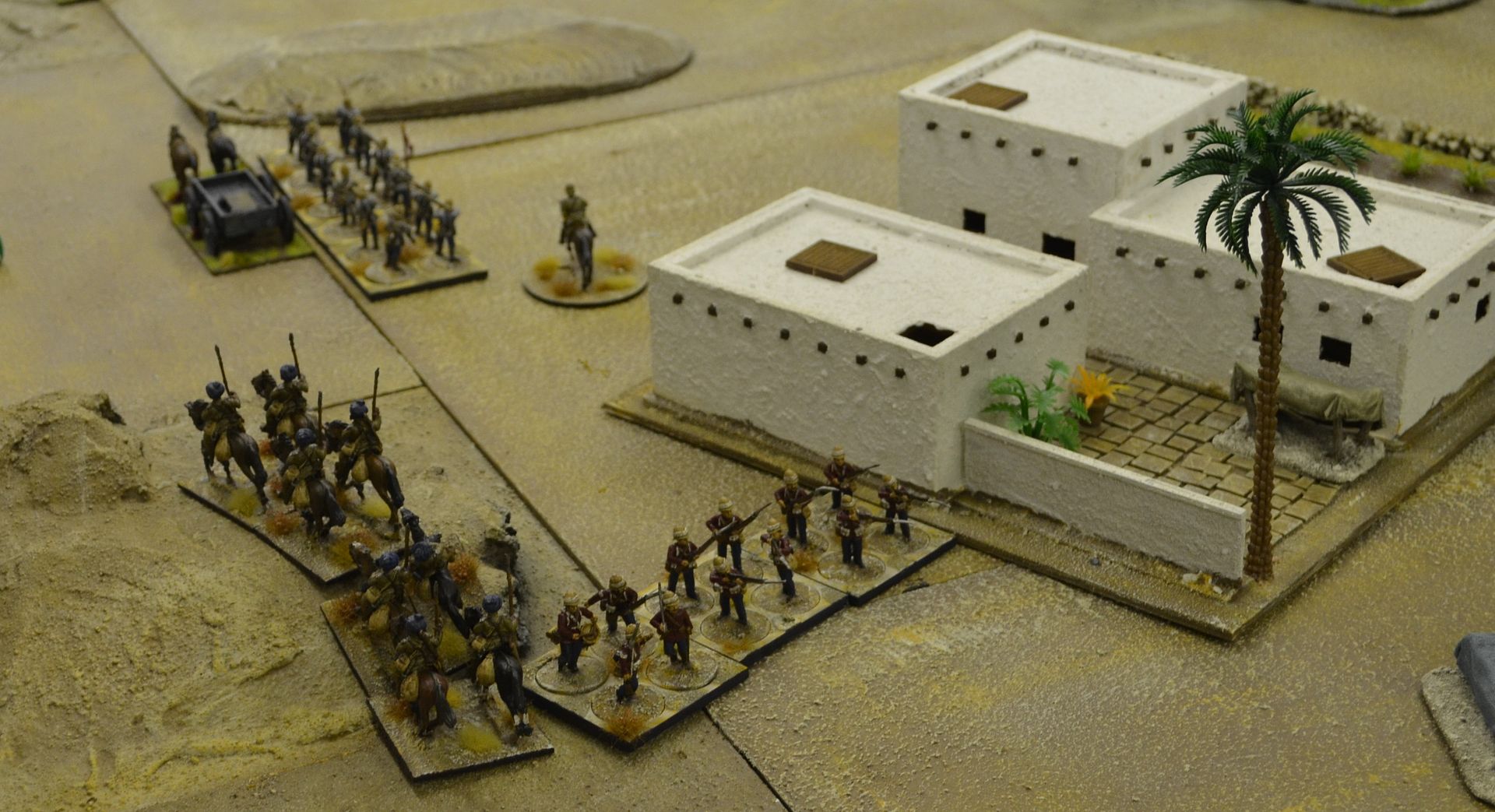 |
| The rear of the column held up well through out the game |
Throughout
the second game virtually all the British troops suffered casualties and many
hit shaken status but there commanders were able to withdraw these units and
keep them in the field through rallying orders. Both sides played with no break
points.
Why did the
same game play out so differently? There was clearly a combination of factors
here which I have explained in the past when we tried a comparable exercise
with a Zulu game.
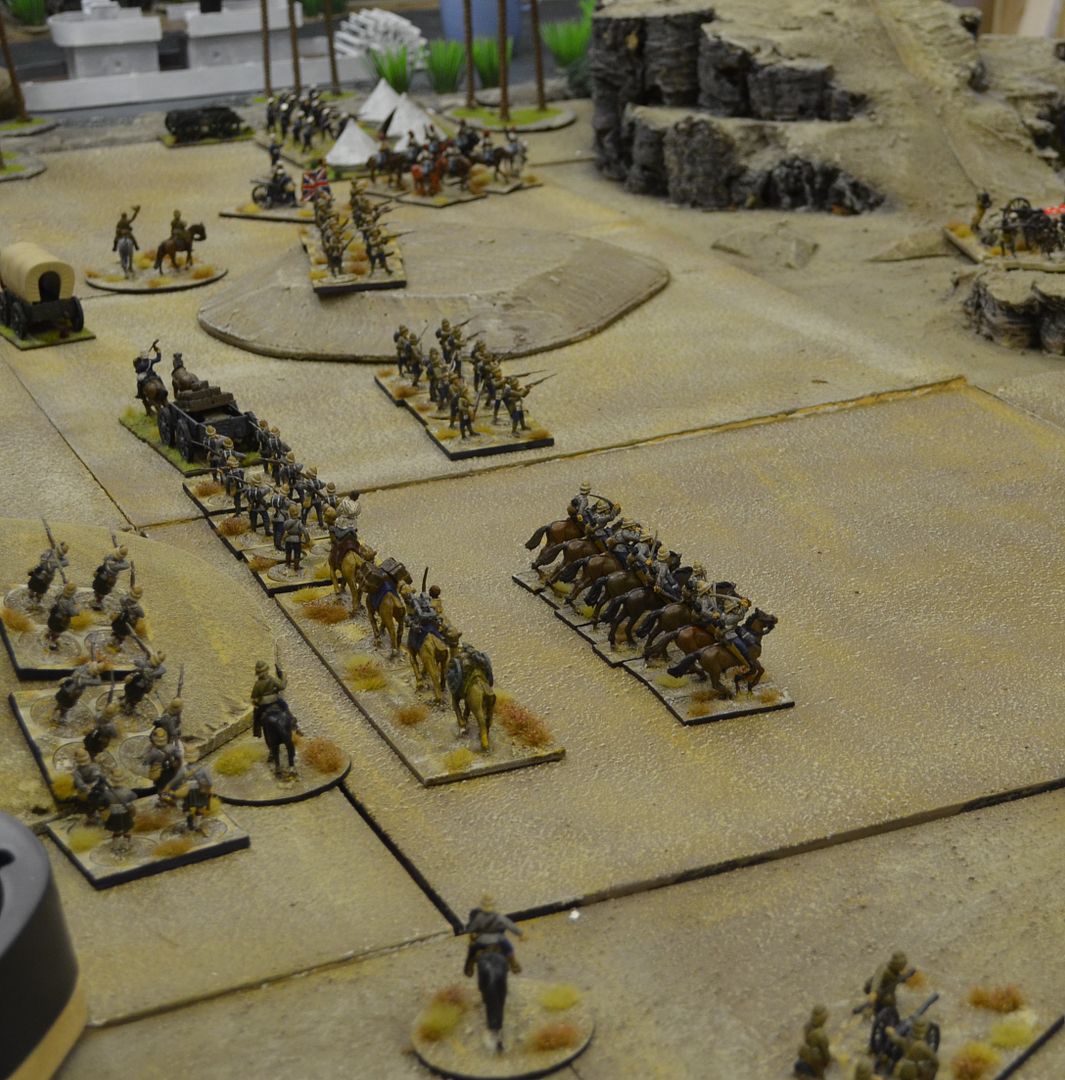 |
| Dressing the lines - command rolls much more effective |
Firstly the
command activations are so very different. In the TMWWBK every unit has an
activation value – fail that and the unit doesn’t move/fight/fire but you move
onto the next one. The activation levels for both sides were fairly comparable
– ie the British Infantry were as likely to move as the natives. In BP the
units are commanded by designated commanders who give orders to their troops.
Depending upon the success roll could move once, twice or three times in a
turn. We certainly had more movement , flanking attacks and positioning in the
Black Powder game and given the that command ratings of the British were better
than their opponents they were the more likely to carry out the commands.
The Black
Powder game certainly delivered a more dynamic narrative with cavalry sweeping
forward. Guns being overrun in the flanks and regularly watching your troops
not wanting to move forward (both sides)
Clearly
command actions had a part to play but so did shooting – unlike TMMWBK where
you have to order your units to shoot everybody who can shoot /fling spears can
do so after their moves. This automatic firing coupled with the fact that you
only roll a few dice for fire effect with BP units significantly changes the
dynamic. Both sides had rifle fire but for the Dervishes to win they had to get
their fanatical spearmen into charge range too inflict damage. On several
occasions the mad fuzzies not only suffered casualties on their approach but
were literally blown away by closing fire as they launched their assaults. The
vast majority of British casualties came from the Dervish rifle units who
although not as effective as a British line were able to both disorder and
inflict losses. Arguably greater coordination between the Sudanese rifle units
and their spear wielding colleagues might have delivered better results.
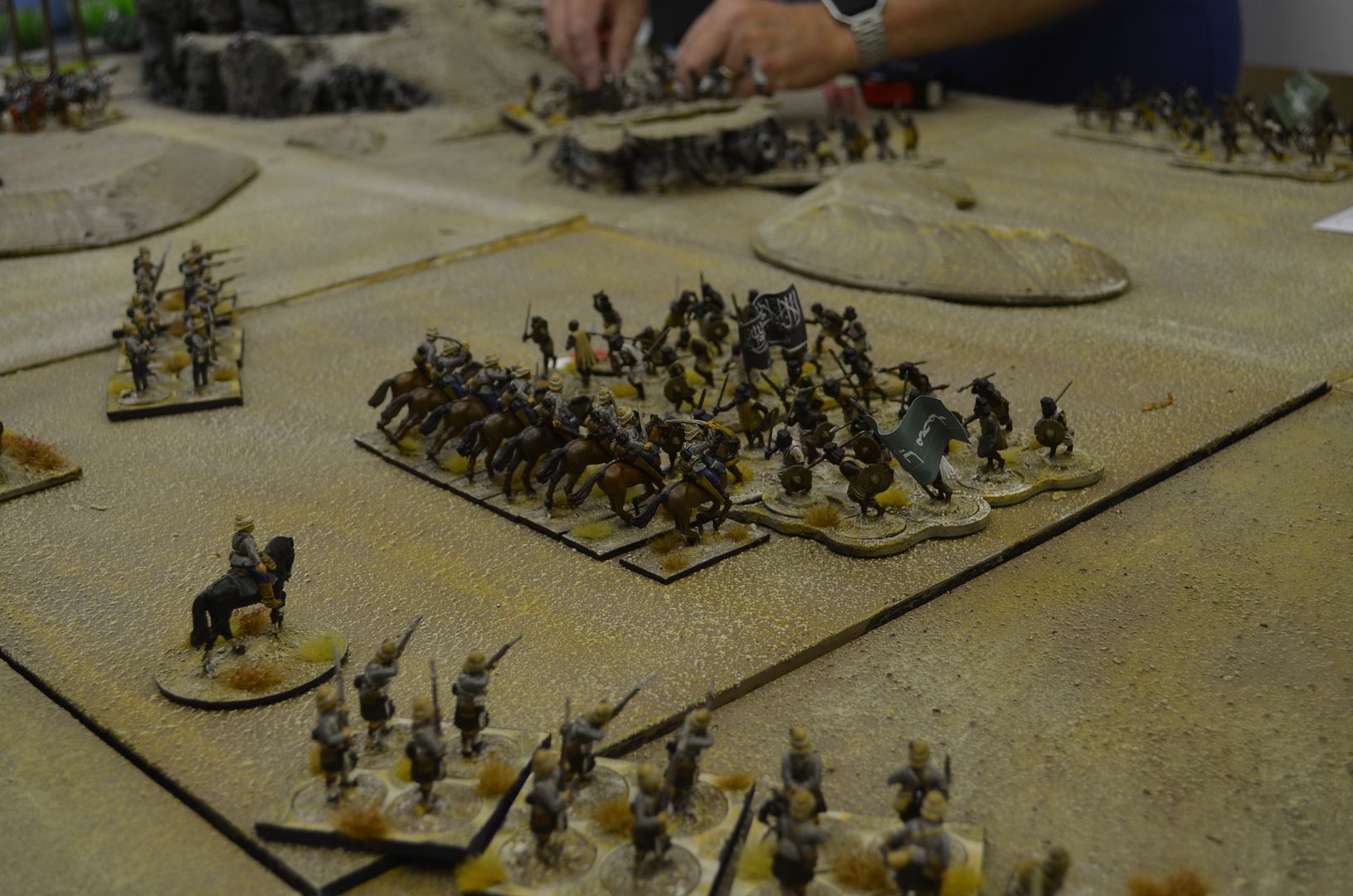 |
| Cavalry charging - as they should |
Another key
difference were the saving throws of each unit and the punishment a unit could
take. In TMWWBK each time a casualty is taken a figure is removed and by
default the fighting prowess of the unit is diminished. This clearly worked in
the Dervishes favour in the first game as there are no saving throws but for
the BP game not only did the Brits more often than not have better morale
(save) they also benefited from their stalwart nature( in BP British Infantry
typically get to reroll one failed save and automatically pass their first
break). Ultimately this meant the British units had a better battlefield
staying power and this was reflected in the final result – every unit had
suffered casualties but only one had been wiped out.
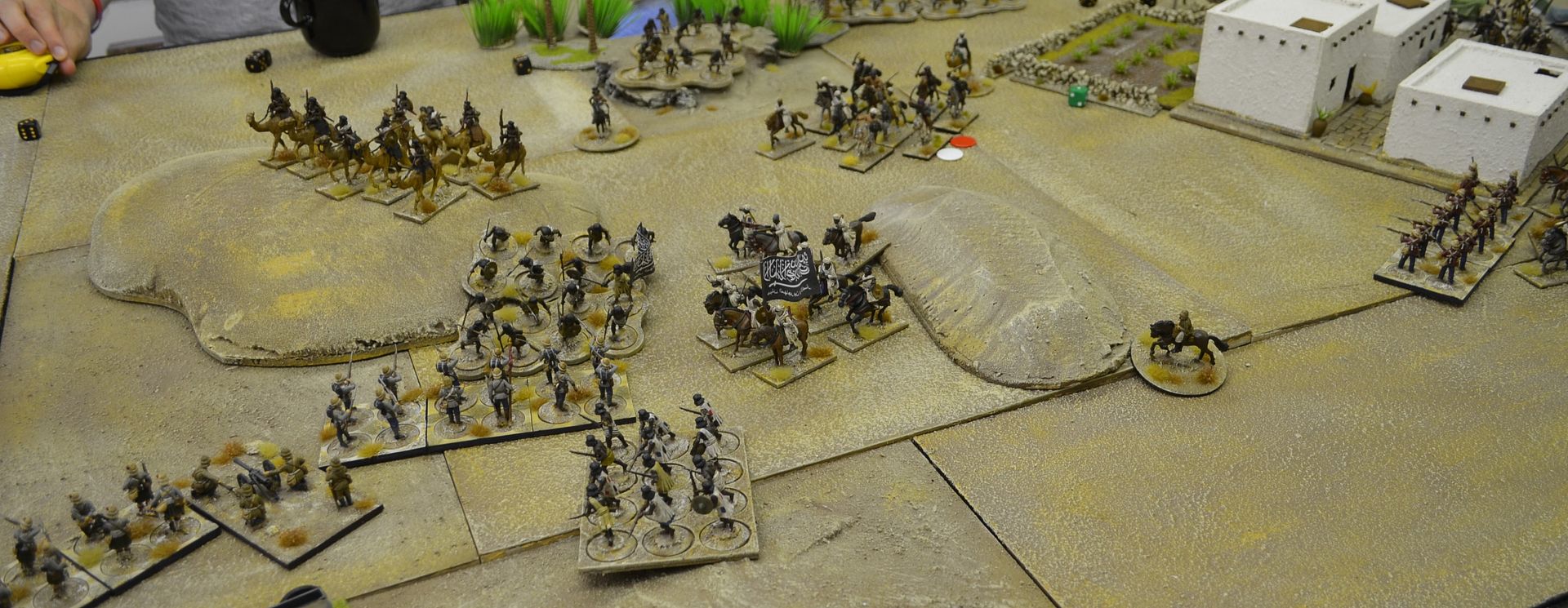 |
| At the height of the battle the British were in serious danger of defeat |
In summary
a combination of greater firepower, better commanders and more disciplined
units albeit numerically smaller won the day in our Black Powder game and yet
got slaughtered to a man in TMWWBK rules. Clearly for big battles the Black
Powder rules are going to give a more historical result but in defence of
TMWWBK they were never designed for big battles.
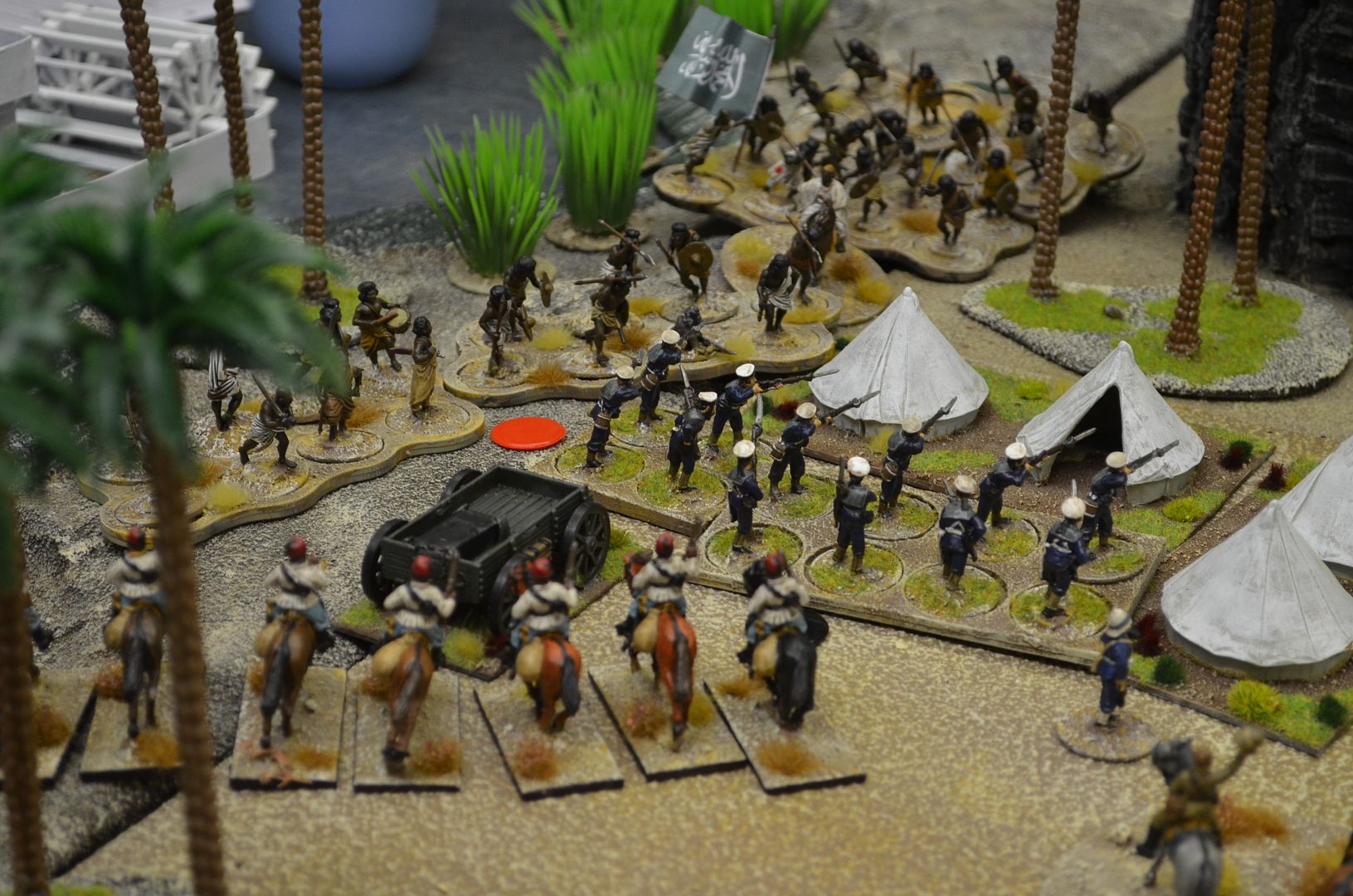 |
| Some of the fiercest fighting was along the river bank |
Following
the conclusion of our games we sat around and chatted about the two versions.
Both games had been equally fun and so very different but I believe there was a
concensus that the second of the two games had proved the better and more
playable (not having to remove individual figures from the field of play) might
have had something to do with it. Furthermore we all agreed that the scenario
is crucial in any colonial game. Had the British been in their defensive lines
from the start it would have just been a slaughter and not a great deal of fun
for either side. The Ambush scenario provided the Mahdist side with an
opportunity to win and that all you need for a Colonial game to succeed.
What these
games also provided was a wonderful spectacle on the table top and hopefully
these games (and others in the future) vindicated the many hours it took to
paint the units. Indeed there are still several units I want to add to the
collection and once I have completed my Khartoum build I have a mind to turn my
attention to these.
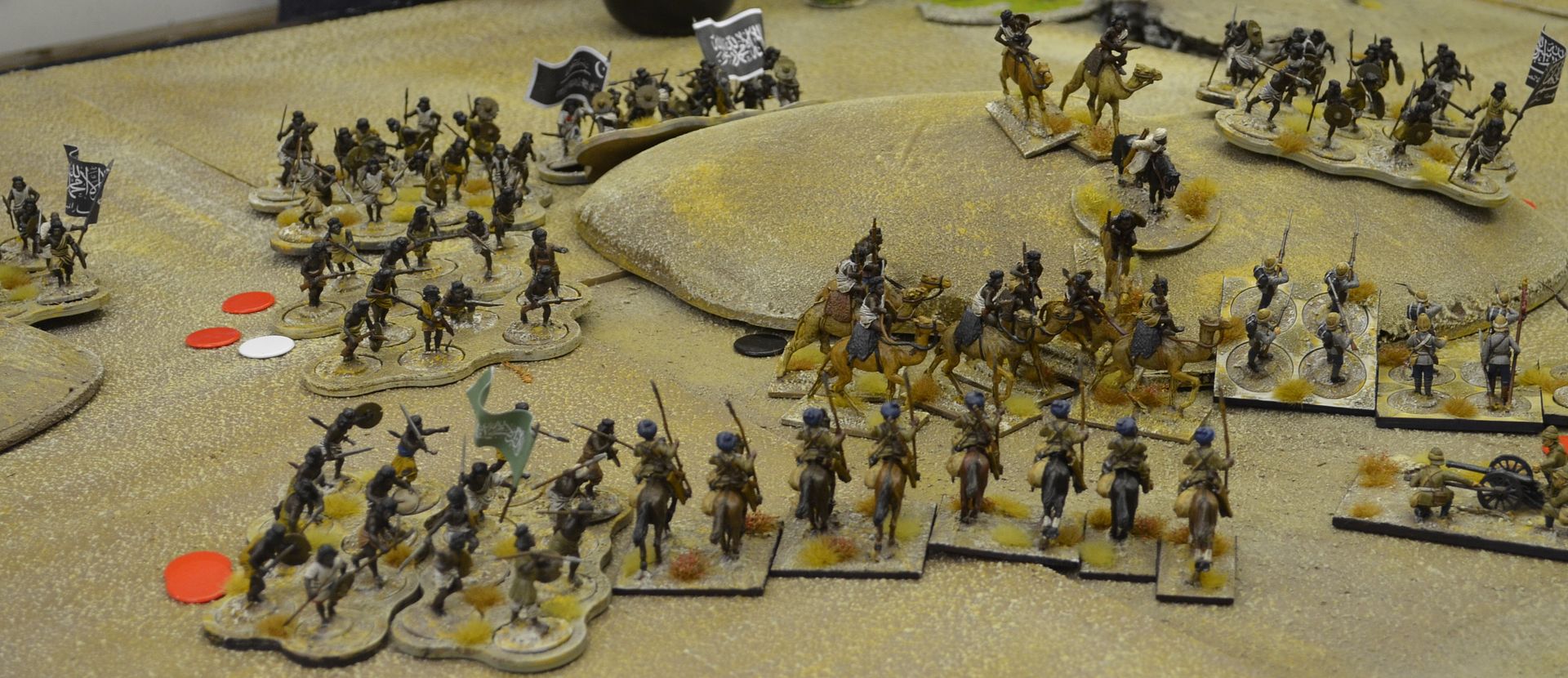
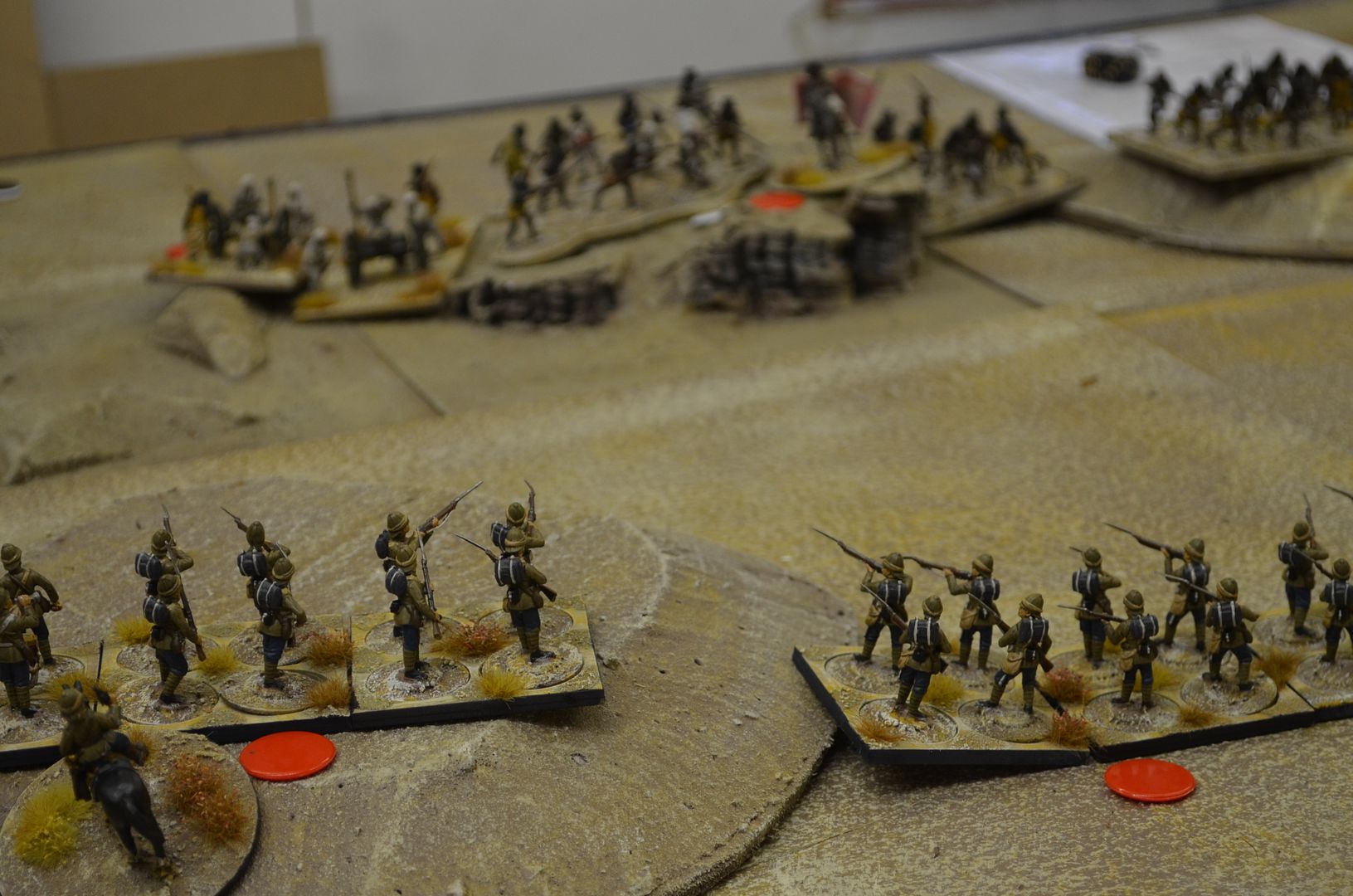
Thanks for doing a side-by-side comparison - very interesting.
ReplyDeleteI am looking at BP for SYW so that is a nice boost, I like that you got more of an historical feeling.
ReplyDeleteSplendid terrain and figures!
ReplyDeleteAnother vote for BP for large games here. An interesting couple of posts. I tend to agree with your conclusions.
ReplyDeleteA year or so ago I did a similar comparison exercise using Reg F&F vs BP(Glory Hallelujah) to refight a small ACW action. Surprisingly, to me anyway, BP gave a result much closer to the historical outcome than RFF.
ReplyDeleteAn interesting comparison, but yes, the second game is a much more historically accurate result. My personal preference is for the Sands of the Sudan rules based on Peter Gilder's set. Thelayers take the Imperial forces, and the Mahdists are controlled by cards and dice.
ReplyDeleteBlack powder always give me an exciting and pretty realistic result without a million factors etc. Can't understand the snobbery against such an easy to use and flexible set of rules.
ReplyDeleteThe argument about lacking "period feel" is for me something in people's heads. You make the period. Whatever rules you use they are just mechanics. BP always seems to give a "realistic" result, as long as you are intelligent about the stats, special rules, and aren't afraid to add bits to fit the period.
Your blog is a shining beacon of light for those who aspire to a level of output and madness few achieve.
The only caveat about BP I should add is we never, ever, use the brigade breakpoint rules. Have never needed ti because the supporting units break tests always at some point cause enough running to the rear to allow a victory to happen, or be obvious, without half the table being suddenly empty!
ReplyDeleteJust wonderful ... in response to the above ... I believe alot of period feel is achieved by the figures and scenery itself and of course the enthusiasm of the people actually playing the game . I was there in spirit one the blind mahdists carrying a pocket full of white feathers on my way to Khartoum :-). ( the 1939 version please )
ReplyDeleteNice overview of the differences between the rulesets. The games look great.
ReplyDeleteVery insightful post, I have kept away from BPin the past but with a couple of the club venturing into 6mm could well be tempted as in my experience TMWWBK does not handle larger games beyound 24 points.
ReplyDeleteCheers
Stu
This comment has been removed by a blog administrator.
ReplyDelete